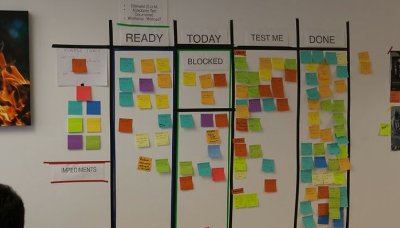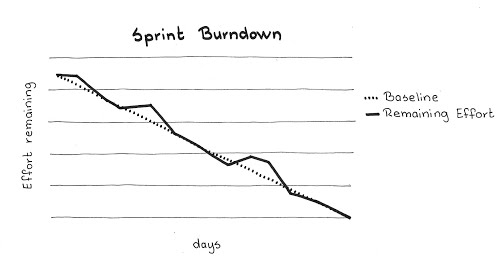So, this activity consists of estimating each user story in
complexity points. It takes its name from the fact that each
participant has a deck of cards face down, each indicating a
value, most often calibrated on a sequence of Fibonacci (0, 1,
2, 3, 5, 8, 13, 21...).
Don't worry, there is no stake. Unless you start a Strip
Planning Poker!
The User Story is taken one by one, and each member of the
team places a card, faced-down in front of them, representing
their estimate of complexity.

There are applications that simulate Planning Poker, but
it's possible to easily create a DIY game.
When everyone has prepared their estimate, they turn the cards
(NB: we can also vote by raising hands). If the estimates are
consistent, the broadest are selected. If a participant gives
an estimate that is very different to the others (more or
less), it's possible that they may have considered an
important method for the realisation that nobody else has, or
they have experienced this ideal and knows the pitfalls. The
other reason may be that they misunderstood the task.
Nevertheless, it is always interesting to hear their point of
view. In the worst case, we can restart a round of debate and
hold a vote.
We can agree on a convention. For example, a story rated
between 0 and 1 will be trivial (change of a label, a config)
and may take less than half a day of work. A task rated 8 or
more (wide scope, requiring the intervention of several
specialists, and/or with risks) poses the risk that the story
will not be completed by the end of the sprint, and this means
that it should be reviewed and recreated as a smaller user
story.
What to do if we do not know how to estimate.
It is usually very difficult to know exactly at what pace we
work on any given task, and it is even more difficult to
estimate the velocity of a team. There will most likely be
mistakes when attempting to estimate, however this is common
and will improve over time. Try to estimate as best as you can
and adjust it for the next spring. Although there is room for
mistakes, a professional team should avoid being overly
optimistic in their estimates because the commitment to the
client to deliver what is put in the Sprint Backlog must be
considered.
NOTE: Although it may be tempting to use time instead of
complexity, which is a more abstract notion at first glance,
it is recommended that you and your team play the game using
complexity.







